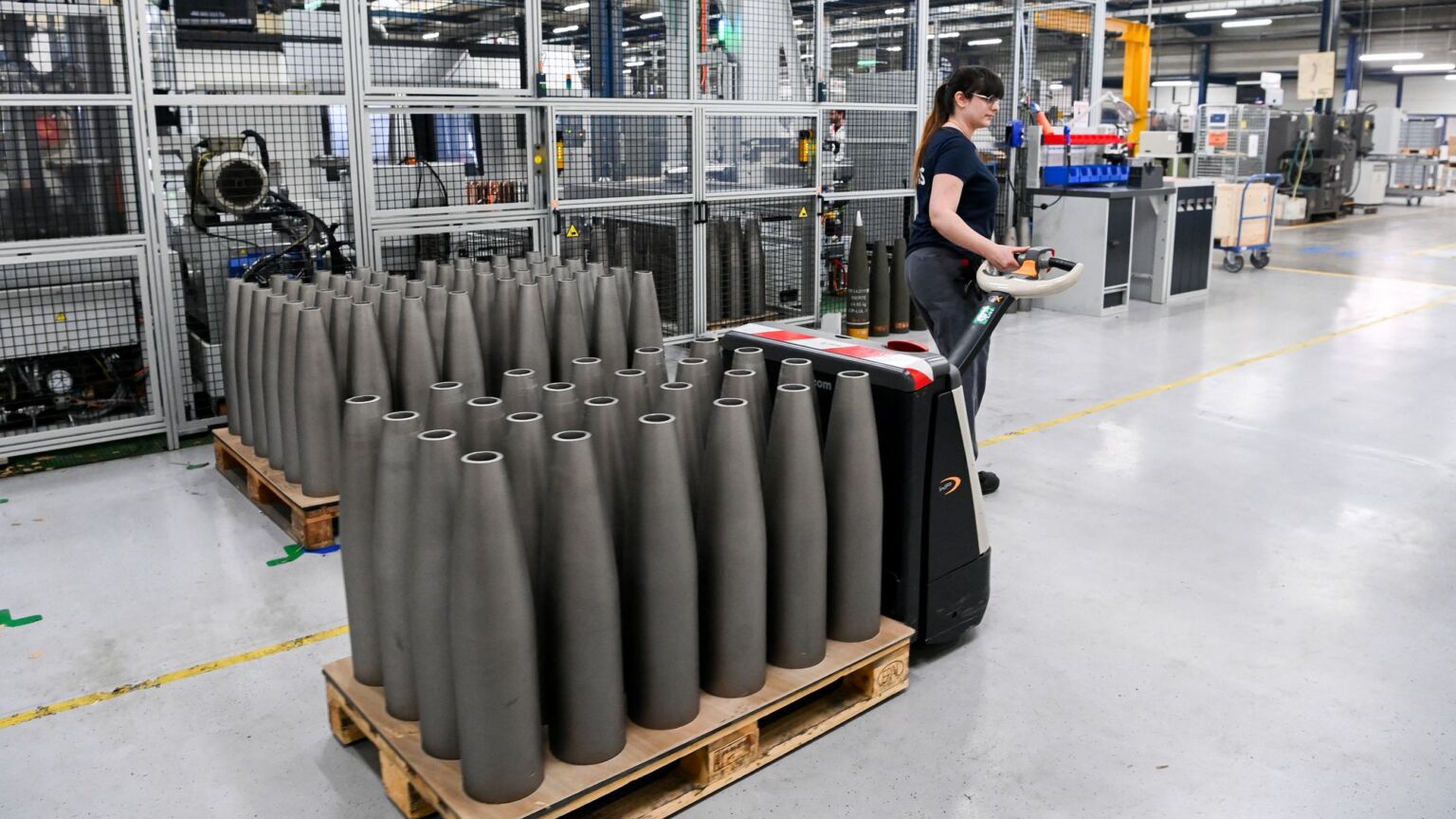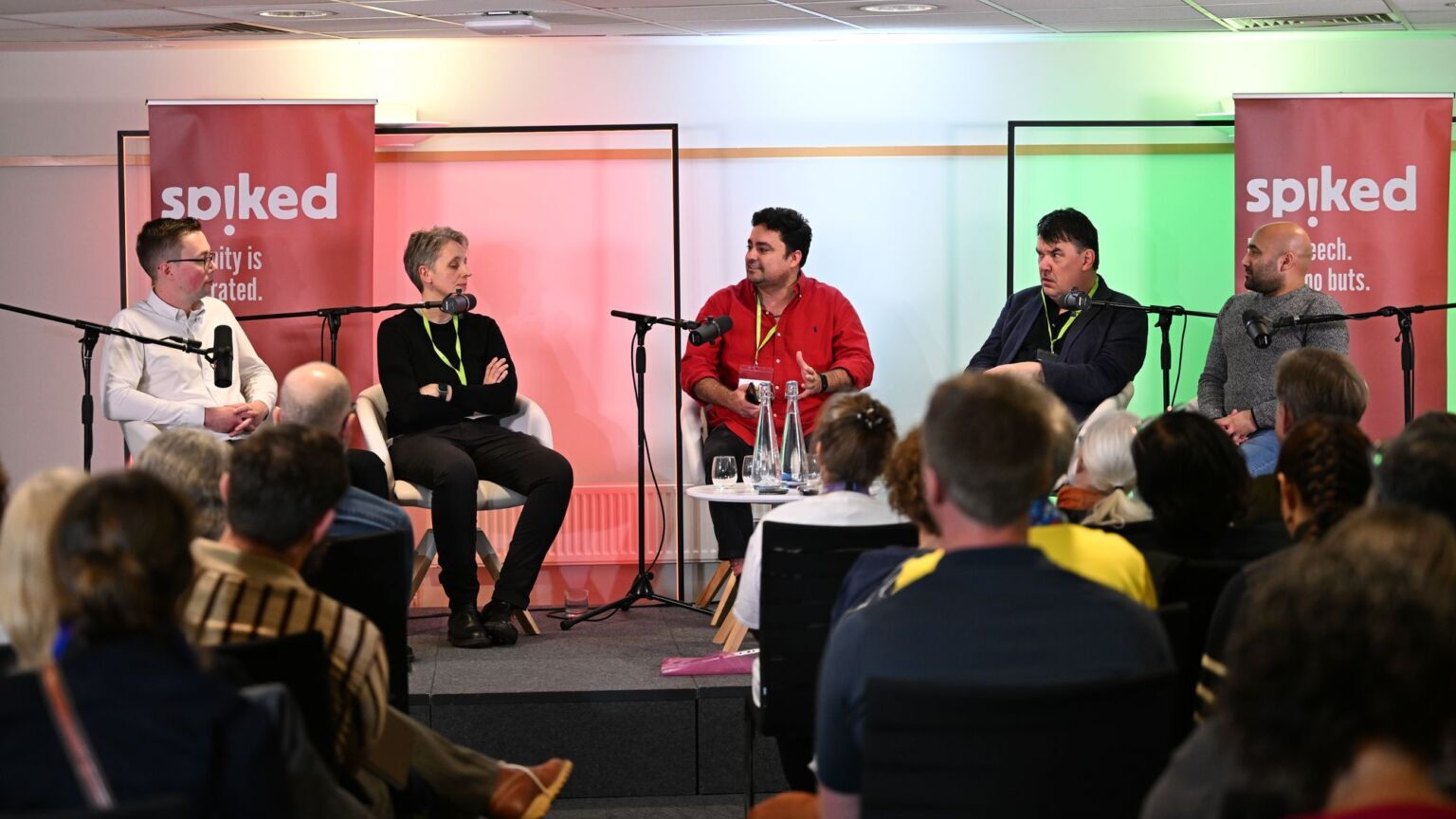Wars are won on the factory floor
To survive the geopolitical turmoil of the 21st century, the West needs to revive its industrial base.

Want unlimited, ad-free access? Become a spiked supporter.
As recent events in Iran have so aptly demonstrated, technological progress married to industrial might produces the most tangible form of power. In the recent conflict in the Middle East, this meant that a second-tier power like Iran was clearly outmatched – first by Israel, then by America.
The West needs to learn this lesson and apply it to its rivalry with a far more formidable foe: China. Unlike the theocrats of Tehran, China’s ambitions are distinctly material. And, until recently, China has made tremendous headway facing relatively little, and largely ineffective, Western opposition.
Fortunately, in America at least, there is an emerging industrial renaissance, led by a wave of new firms investing in key technologies, such as drones, satellites, fuel-efficient jet engines and robotic drilling. These and similar companies remain the West’s best hope of slowing China’s bid for global pre-eminence – a campaign that now extends into space and advanced military systems.
China, the most important ally of Tehran’s beleaguered mullahs, cannot be easily dismissed. Since its accession to the World Trade Organisation in 2000, China has grown to the point where it boasts as many factory exports as the US, Japan and Germany combined. In 2023, the Middle Kingdom forged roughly half the world’s steel and became the world’s largest automobile market – including for electric vehicles, whose batteries are linked to an industrial economy that’s highly dependent on coal-burning power stations. It also accounts for more than half of all shipbuilding.
The impact has been devastating on the West. Europe’s industrial sector continues to decline, shedding one million manufacturing jobs between 2019 and 2023. In the US, a study by the Economic Policy Institute found that China’s export surge alone cost up to 3.7million American jobs since 2000. Between 2004 and 2017, America’s share of global manufacturing fell from 15 per cent to 10 per cent, even as its reliance on Chinese inputs doubled, while those from Japan’s and Germany’s fell.
Unlike Japan in the 1980s, whose growth threatened American industries, China’s rise is directly tied to power projection, with substantial investment in space, robotics and other technologies with military uses. By contrast, the US struggles to supply its own forces – and those of its closest allies – with basic ammunition. Until recently, it has even relied on China-based industry to produce key parts in areas as sensitive as submarine production.
Without a full-scale industrial revival, the West risks following the disastrous path of Nazi Germany, Imperial Japan and the Soviet Union – all of which were ultimately overwhelmed by superior industrial and technological power.
The question for the US and Western powers is how to avoid the same fate they once imposed on their enemies. US president Donald Trump’s preference for tariffs offends many traditional liberals, while some on the left favour subsidies and tax incentives. But tariffs are not the whole picture. Trump’s first-term tariffs had limited impact, though they are increasingly common in today’s illiberal trading environment.
Europe protests most loudly about tariffs, but it has long resisted lowering its own historically high trade barriers. Canada, too, has maintained very protectionist measures for years. Last Autumn, it levied a 100 per cent tariff on imported Chinese electric vehicles (EVs) and a 25 per cent surtax on Chinese steel and aluminium. And despite the oft-touted consumer benefits of cheap imports, most Americans appear willing to accept higher prices in exchange for shifting production away from China – a sentiment that has prompted retailers such as Walmart to seek more domestic suppliers. India, another rising power, levies tariffs of 70 to 100 per cent on Chinese and other foreign EVs.
The increasingly hostile atmosphere engulfing global trade is encouraging a modest reshoring trend. There is certainly growing evidence that more and more Western firms are bringing their manufacturing back home. Little wonder that Chinese exports to the US have recently dropped to their lowest level since the pandemic.
Arguably, the most militarily significant front in this contest is aerospace and defence technology. The West’s victories in the Second World War and Cold War were won in large part through America’s technological advances, as well as its hyper-efficient assembly lines, which were originally honed for civilian production. Today’s struggle for global supremacy similarly runs through technologies with both civilian and military uses. This is clear from the US Army’s $36 billion procurement overhaul and the strategy of new defence and space startups.
China, not Iran, is the primary challenge to both Boeing and Airbus, and it is rapidly advancing into space. But the main Western players now are no longer confined to the corporate dinosaurs that emerged from the Second World War. Rather, they are a wave of new firms building fuel-efficient aircraft, space platforms, drones and missiles – all fuelled by a surge in investment into the defence sector.
Perhaps the greatest shift among these firms lies in their attitude. The Silicon Valley elite have often been globalist and dismissive of manufacturing. But the new generation of ‘tech bros’ embrace their role in reviving US industrial production. In places like El Segundo, a blue-collar town just south of Los Angeles International Airport, there is even a kind of competition over who can display the largest American flag.
At present, the honours go to Neros, a 40-person startup founded by two former professional drone racers, Soren Monroe-Anderson and Olaf Hichwa. Anderson, who never attended university, now runs a firm producing 1,500 drones a month – 1,000 of which are shipped to Ukraine – using entirely American parts.
The entrepreneurs behind Neros and other drone startups, such as San Diego-based Shield AI, represent something of a throwback to the early industrialists of Britain and North America. Avaricious and often ruthless, particularly with their workers, they nonetheless believed fervently in their nations’ economic destinies. British industrialists viewed the world as a field to be mastered from their over-achieving island.
Their efforts brought Britain to a position of global dominance. But as historian Lawrence James notes in The Rise and Fall of the British Empire, even during its imperial apogee, Britain began to suffer a debilitating decline in industrial innovation and growth. It became more fashionable among Britain’s bourgeois elites to pursue careers in the arts, finance or the civil service, rather than dirty their hands working in industry – a phenomenon political scientist Myron Weiner described as the ‘psychological deindustrialisation’ of the world’s premier industrial power.
America followed a similar trajectory. By 1890, the US had surpassed Britain as the world’s leading industrial nation. This generated intense class conflict, but also astonishing leaps in innovation and social mobility. Economic historian Robert Gordon has argued that this surge created some of the greatest gains in prosperity and technology in human history.
But in recent decades, Gordon notes, productivity growth has slowed sharply as the US has deindustrialised. Many in academia and on Wall Street supported this shift. One economist at Northwestern University has claimed that ‘factories aren’t the future’. Christine Romer, former chair of President Obama’s Council of Economic Advisers, infamously dismissed claims that building stuff might be more important than management consultancy as a product of ‘sentiment and history’. Yet service exports account for less than a third of America’s overseas sales.
The collapse of manufacturing has been especially punishing for Britain. The decline of industrial areas, such as the Midlands, has generated levels of regional inequality that are the worst of any advanced economy. The birthplace of the Industrial Revolution now ranks 12th in industrial output – behind Mexico, Russia and Taiwan. Most Britons have experienced a decline in living standards as blue-collar jobs disappear and the country pours its limited capital into Middle Eastern oil and Chinese goods.
The American Midwest industrial belt has fared no better. Researchers John Russo and Sherry Linkon have written about the psychic and economic devastation in places like Youngstown, Ohio, an old steel-making centre:
‘In places like Youngstown, many people still remember what life was like when employment was high, jobs paid well, workers were protected by strong unions and industrial labour provided a source of pride – not only because it produced tangible goods but also because it was recognised as challenging, dangerous and important. The memory of what it felt like transforming raw ore into steel pipes and to be part of the connected, prosperous community that work generated still haunts the children and grandchildren of those workers.’
So how does the West recover its industrial mojo before it is too late? Tariffs are a blunt instrument, but they may have spurred the likes of Honda to scrap plans to move production to Mexico and keep it in Indiana instead. Pharmaceuticals giant Eli Lilly and chipmaker TSMC have both recently announced billion-dollar investments in US facilities. Silicon Valley’s star performer, Nvidia, has also committed to major US-based development. The acquisition of US Steel by Japan’s Nippon Steel is a sign that this essential industry is still viable in the US.
There are other reasons for hope. Students are shifting away from four-year university courses towards trade schools – which is hardly a surprise given, as of late 2021, nearly half-a-million manufacturing jobs were unfilled. Since 2011, college enrolments have declined by around 15 per cent, while vocational training has experienced steady, accelerating growth. A recent survey found that 83 per cent of Gen Z believe learning a skilled trade is a more secure path to prosperity than college – including 90 per cent of those who already hold university degrees.
This grassroots shift comes at an opportune time. Technology and entrepreneurial daring may well outmanoeuvre China’s centralised industrial policy. Nobel laureate Michael Spence notes that innovations such as 3D printing and robotics are enabling a new wave of disruptive manufacturing, which could blunt China’s edge.
Starship, SpaceX’s reusable spacecraft, may soon allow US forces to deploy anywhere on the planet within an hour. SpaceX veterans are also working on hypersonic systems at Castellion, another El Segundo-based startup, with $100million in venture capital.
Even Silicon Valley firms long averse to defence contracts are getting involved. Meta has partnered with Anduril – which also built America’s first pilotless fighter jet – to provide augmented reality for US soldiers.
The West will need a lot more endurance to face the challenge posed by China than anything we face from Iran. In this contest, we do not need more social-media influencers or ‘financial engineers’, but production-focussed, innovative firms. If the West wants to reach Mars – or prevent adversaries from launching missiles and drones – it will have to look not to Wall Street or Hollywood, but to the factory floor.
Joel Kotkin is a spiked columnist, a presidential fellow in Urban Studies at Chapman University in Orange, California, and a senior research fellow at the University of Texas’ Civitas Institute.
You’ve read 3 free articles this month.
Support spiked and get unlimited access.
Help us hit our 1% target
spiked is funded by readers like you. It’s your generosity that keeps us fearless and independent.
Only 0.1% of our regular readers currently support spiked. If just 1% gave, we could grow our team – and step up the fight for free speech and democracy right when it matters most.
Join today from £5/month (£50/year) and get unlimited, ad-free access, bonus content, exclusive events and more – all while helping to keep spiked saying the unsayable.
Monthly support makes the biggest difference. Thank you.











Comments
Want to join the conversation?
Only spiked supporters and patrons, who donate regularly to us, can comment on our articles.